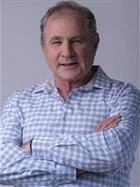The term 'strategic intent' entered our lexicon in 1989 with an article by that title appearing in the Harvard Business Review. The authors are Gary Hamel and (the late) C K Prahalad.

The Kodak factory, 1900, Sevran, France. John Kotter, writing in Forbes, put Kodak's downfall down to
complacency. (Image: Wikimedia Commons)
Essentially they postulated that companies that had risen to global prominence in the preceding 20 years did so because their ambitions were out of all proportion to their resources.
Or, as your mum would say, "You shouldn't do that - it's not safe". She was right, but I bear the scars with great pride and fondly remember my many visits to the emergency unit which stay open a lot longer than libraries. Perhaps more time spent in the latter would have prevented time spent in the former. But I digress.
Global leadership
Hamel and Prahalad's paper stretches the measure of success beyond shareholder wealth all the way to global leadership (although the two are admittedly inexorably linked). They cite a 'feasibility sieve', which filters out any strategy that does not allow managers to be precise about the "how" and "what" of their plans, and if they have the necessary resources to accomplish it. In other words, they tend to do today what they did yesterday using the ways and means at their disposal presently.
The authors contend that the business's resources are an unreliable predictor of future global success. Companies that are afraid to commit to goals that lie outside the range of planning are, they state, unlikely to become global leaders. It's not what can be done, but what could be done. No one really knows what the terrain will look like when we head down a certain road, so strategic intent is like a marathon run in
400m sprints.
The hierarchy
Hamel and Prahalad recognise the 'strategy hierarchy' of goals dictating strategies dictating tactics, but cite this as a factor which does not contribute to the quest for global dominance - they actually are of the opinion that it contributes to the decline of competitive advantage. However the strategy hierarchy, in my opinion, does have practical value in the field of marketing, although it has become a little befuddled, as we now need to add 'problem definition', 'objectives' and the 'brand essence'.
I would like to address those terms which the authors omit in their paper. Firstly, the difference between goals and objectives. 'Goals' has become a term used loosely, very often when the word 'objective' would be a more suitable term. We talk about sales goals, expecting to hear numbers and dates, and also life goals which span many years, and would include rock star, soccer player, and Formula 1 driver. However we can remove the fuzziness, as there is consensus that goals are generally regarded as long term pursuits (such as to become the world F1 champion), where objectives would be discrete deliverable (such as get the Ferrari team to return my calls during my lifetime). I tend not to use 'goals' in my work, for these reasons: it is sometimes used contrary to its definition, and secondly, it spans years, whereas my clients want results yesterday. So, for me, the strategy hierarchy is Objectives dictate Strategies dictate Tactics. But it still falls short.
The problem
Hamel and Prahalad also omit the brand essence, but allude to it by describing strategic intent as an obsession. It is not difficult to imagine brands, and the people behind them, who might be obsessed with making computers more human, driving more pleasurable or cola more refreshing - as opposed to increasing shareholder wealth. So the analogy between obsession and essence is an easy want to make, and I will leave it at that.
However, what is absent, and what I am obsessed with is: problem definition.
The strategy hierarchy from my perspective should then be amended to Problem-Objective-Strategy-Tactic. I would then relegate goals to reside with visions, missions and other lofty ideals found on the inside front page of annual reports. This then brings to the fore a crucial element: accurate problem solving. As Martin Puris of Ammarati Puris states: 80% of all work fails before one word of copy is written. Although no empirical evidence exists to support this statement, I place some faith in his 30 years of building some of the world's most iconic brands. This statement supports my obsession with problem definition, as I too believe the majority of work has already failed at the initial briefing stage where the problem has not been discovered, let alone articulated. For more on the subject of problem definition and problem domains, see these two articles:
Einstein proved it, yet agencies don't do it and then there's a problem.
Tools of the trade
Hamel and Prahalad mention a number of companies that have implemented strategic intent. I don't know how one can measure those companies that did not become global champions, so survivorship bias probably skews the perspective. The fact that Kodak is used as an example perhaps alludes to this.
When it comes to strategic analysis, I will let the authors speak for themselves:
"It is not very comforting to think that the essence of Western strategic thought can be reduced to eight rules for excellence, seven s's, five competitive forces, four product life-cycle stages and innumerable two-by-two matrices."
Although they do not offer any alternative methodologies (perhaps there are no generic ones), they do tell us what the most effective weapon a new challenger brand can possess is simply: a clean sheet of paper. I like that.
Ref: Gary Hamel, C.K. Prahalad. Strategic Intent. Harvard Business Review, Jul - Aug 2015.



























